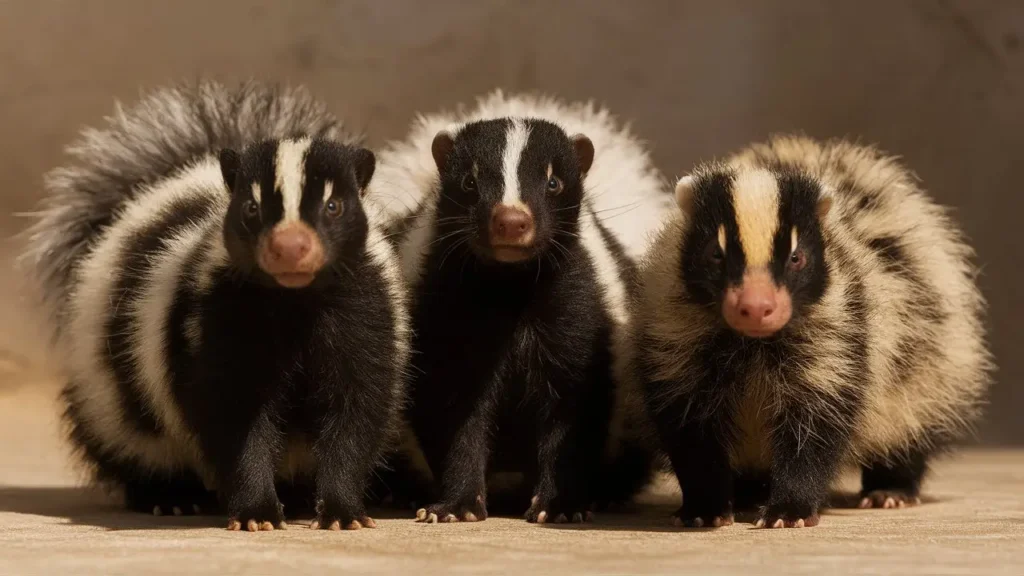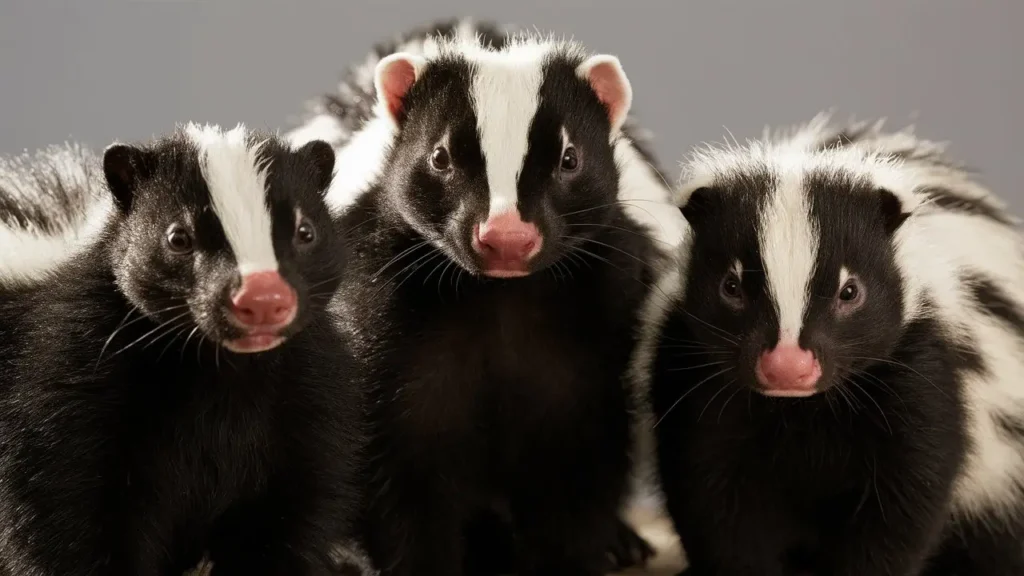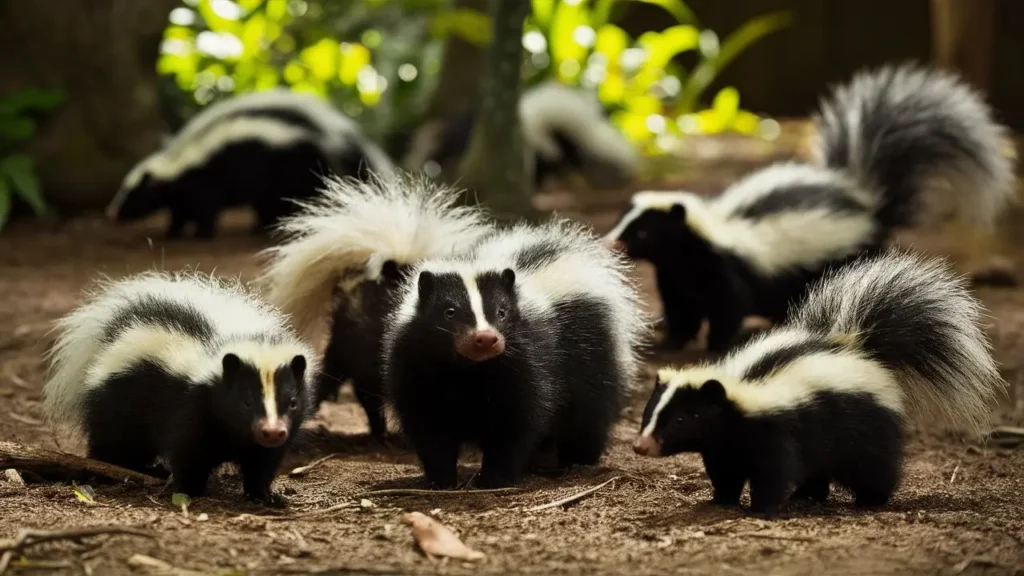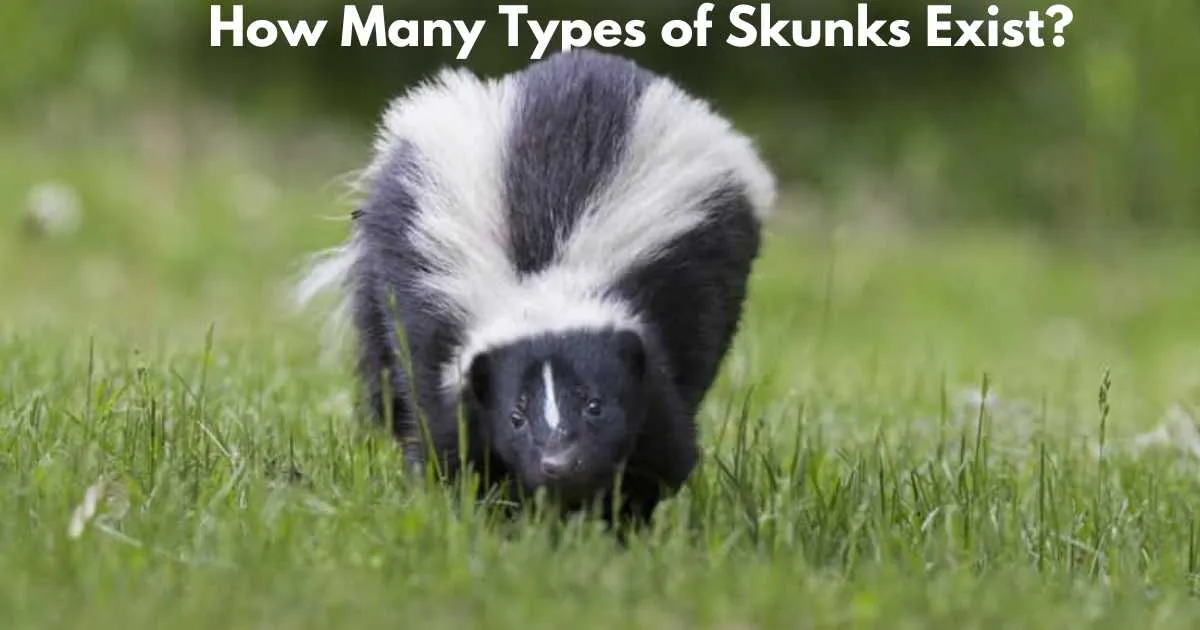12 Types of Skunks: Did You Know?
When we think of skunks, we often picture the iconic striped skunk with its black-and-white pattern and famous defensive spray. However, the world of skunks is far more diverse than most people realize. Did you know there are 12 recognized species of skunks, each with unique features and adaptations? In this article, we’ll explore the types of skunks, their habitats, behaviors, and what makes each species distinct.
A Glimpse Into Skunks’ Origins
Skunks belong to the Mephitidae family, which comprises 12 species found primarily in the Americas. Fossil evidence suggests that skunks have existed for over 25 million years, evolving during the late Oligocene epoch. These resilient creatures are native to North and South America, thriving in a wide range of environments from dense forests to arid deserts.
Habitats and Adaptability
Skunks are highly adaptable and can thrive in diverse habitats, including:
- Forests and Woodlands: Offering ample shelter and food sources.
- Grasslands: Where they forage for insects and small prey.
- Deserts: Adapted species like the hog-nosed skunk excel in arid regions.
- Urban Areas: Skunks often find refuge in human environments, such as under decks or in abandoned burrows.
Their ability to survive in varying climates underscores their resilience and ecological importance.

Types of Skunks
While there are 12 species of skunks, four are the most well-known. Let’s delve into these fascinating species:
1. Striped Skunk (Mephitis mephitis)
- Appearance: Black fur with two distinctive white stripes running from head to tail.
- Size: The largest skunk species, growing up to 29 inches and weighing 7–10 pounds.
- Habitat: Common throughout North America, thriving in forests, fields, and even suburban areas.
- Diet: Omnivorous, feeding on insects, small mammals, fruits, and plants.
- Unique Traits: Known for its potent spray, capable of deterring predators from up to 10 feet away.
2. Spotted Skunk (Spilogale putorius)
- Appearance: Smaller and more agile than the striped skunk, with black fur patterned with white spots and stripes.
- Size: Measures 15–25 inches and weighs 1–3 pounds.
- Habitat: Found in open areas like grasslands, deserts, and farmlands in the southern and western U.S.
- Diet: Primarily insectivorous, consuming grasshoppers, beetles, and other small invertebrates.
- Unique Traits: Performs a handstand as a defensive display before spraying.
3. Hooded Skunk (Mephitis macroura)
- Appearance: Characterized by a “hood” of long white fur on its head and back.
- Size: Medium-sized, measuring 19–24 inches and weighing 2–4 pounds.
- Habitat: Found in the southwestern U.S. and Mexico, often in arid or semi-arid regions.
- Diet: Omnivorous, eating fruits, insects, small vertebrates, and plants.
- Unique Traits: Unlike other skunks, hooded skunks can climb trees to forage or evade predators.
4. Hog-nosed Skunk (Conepatus leuconotus)
Unique Traits: Its snout is a powerful tool for rooting in the soil, and it performs handstands similar to spotted skunks when threatened.
Appearance: Features a prominent, pig-like snout used for digging and foraging.
Size: Slightly smaller than the striped skunk, measuring up to 24 inches and weighing 4–6 pounds.
Habitat: Native to the southwestern U.S., Central America, and parts of South America.
Diet: Specializes in consuming insects, particularly grubs and beetles.

Unique Features Across Skunk Species
Variations in Size and Weight
- The striped skunk is the largest species, while the spotted skunk is the smallest, often weighing less than 3 pounds.
- Medium-sized species like the hooded skunk and hog-nosed skunk fall between these extremes.
Fur Patterns and Colors
- While black-and-white fur is common, some skunks, like the hooded skunk, have unique markings that distinguish them.
- Spotted skunks display a striking pattern of spots and broken stripes rather than solid bands.
Behavioral Differences
- Spotted skunks are the most agile and known for their acrobatics, while striped skunks rely on their robust spray for defense.
- Hog-nosed skunks are skilled diggers, spending much of their time searching for buried food.
Skunk Behavior and Interaction With Humans
Skunks are nocturnal and solitary animals, with the exception of mating season. Despite their reputation, skunks are generally docile and avoid confrontations. However, when threatened, they deploy their infamous spray—a sulfur-based liquid emitted from glands near the tail.
Key Defensive Behaviors
- Stamping feet as a warning.
- Raising their tails to signal readiness to spray.
- Performing handstands (spotted and hog-nosed skunks).
Skunk Spray: A Powerful Deterrent
The spray can be detected up to a mile away and serves as an effective defense against predators like coyotes and foxes.

Conservation and Threats
While skunks are not currently endangered, they face threats such as habitat loss, vehicle collisions, and conflicts with humans. Conservation efforts include:
- Habitat Protection: Preserving natural areas to support skunk populations.
- Education and Coexistence: Encouraging homeowners to use humane methods to deter skunks rather than trapping or killing them.
- Legal Protections: Many regions prohibit the hunting or trapping of skunks without permits.
FAQs About Skunk Species
How Many Skunk Species Exist?
There are 12 recognized species of skunks, each adapted to unique habitats and lifestyles.
What Is the Rarest Skunk Species?
The hooded skunk is among the rarer species, found primarily in Mexico and Central America.
Can Skunks Climb Trees?
Yes, some species, like the hooded skunk, can climb trees to forage or escape predators.
Conclusion
Skunks are more than just their iconic spray; they are diverse and fascinating creatures with unique adaptations that enable them to thrive in various environments. From the agile spotted skunk to the burrowing hog-nosed skunk, each species plays an important role in maintaining ecological balance. By understanding and appreciating these animals, we can coexist peacefully and support their conservation.rent types of skunks, it’s clear that these animals can vary greatly in appearance, behavior, and habitat. Whether spotted in the wild or encountered in urban environments, skunks play an important role in maintaining ecological balance. From the widespread striped skunk to the lesser-known hog-nosed skunk, each species possesses unique qualities worth learning about.

